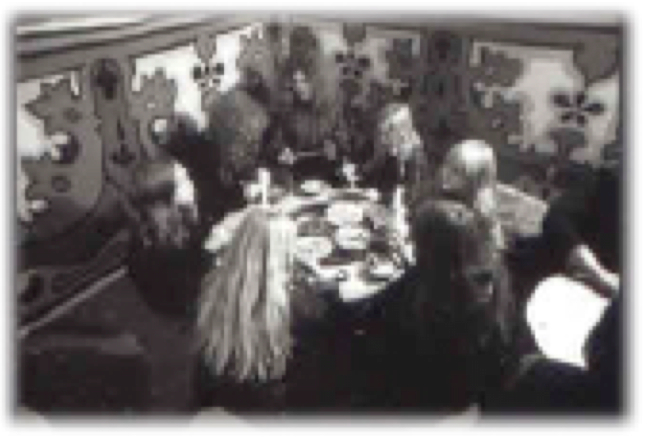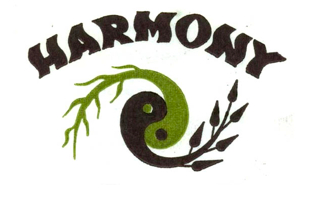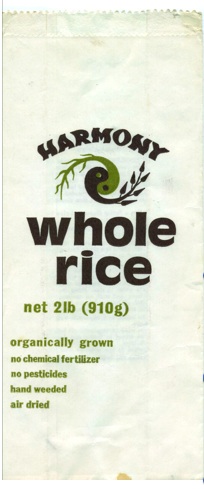It’s 0637 and John and Jessica are still not ready to go. I go up to chivvy them along and Jessica is still getting a few things sorted. I grab a suitcase to start moving them along. Rick has already warned that Maya Island Air are sticklers for punctuality, that Tropic Air would wait but Maya go whether or not you’re there. Jessica is mad at me, in a friendly way, for rushing them and, as it turns out, we get to the airfield by 0643, which is OK, we all check in and Jessica takes farewell shots of Elliot, our wonderful driver and others. Then we fly direct to Belize City, high over the mountains and the various nature reserves, forest reserves, privated protected reserves and other wooded land that we want to slowly and sustainably turn into charcoal. We pass over a large Mennonite community, a few token trees, mostly pasture, all livestock, cows, pigs chickens. Bloody Germans, and as I am the descendant of German Lutheran farmers who share the same attitude I feel qualififed to comment. At Belize City we check our bags through to Ithaca and go up the restaurant and ‘waving gallery’ to have some breakfast. I’ve brought along one of Justino’s cacao pods that I pre-cut around the edges. Justino pulls it open along the cut lines and we all feast on the sweet beans and Marco offers some to the waitress, who, it turns out, is from Barranco and for whom cacao seeds are a known treat. She is delighted to share in our after breakfast snack. I hadn’t realise that John and Jessica hadn’t tasted cocao fruit pulp before. Justino then shows us how to eat the placenta, which is also tasty, the stringy thing that holds all the seeds in a bunch as you lift them out of the pod. I ask the waitress if she knew Andy Palacio and she says that his family lives just across the street from hers. Barranco had a few cacao growers but the soil isn’t good for cacao. The Garifuna eat yams, cassava and seafood so this isn’t a big problem for them as these crops grow well on the poor soils of Barranco. In the departure lounge the shop has a display of Green & Black's but no reference to the fact that it contains Belizean cacao, just stuffed onto a Cadbury's display rack, grabbing prime space from Dairy Milk and Bournville.
At Houston we part company with Jessica. She has been a real trouper and her presence and uninhibited female energy had leavened what would otherwise have been a bunch of men and all work and no play. We got a lot done in the past 3 days, understand things a lot better, have gotten to know each other better and we are all, John, myself, Arthur, Marco, Justino and Bartolo Teul from YCT, looking forward to the course. Niclaos knows most of it already, but he has been a mine of information, though he needs to be asked before he comes out with it. That’s fine, scientists should be on tap, not on top, as Churchill once said.
The flight to Newark is uneventful, arriving half an hour early. Then we make the connection to Ithaca, arriving at 10:20, the bags come off the carousel, except for John's and mine. We go to a desk where a woman struggles to work the computer, calls a guy out from the back who is clearly pissed off that we have interrupted his nap, who sorts it out, snaps at her and disappears into the US Air back office. Then to the Statler Hotel where they have an emergency razor/toothbrush/deodorant kit. I advise John to keep his undershirt on to avoid BO tomorrow.
Monday November 24th
We all meet for breakfast, Jerry, Teri, Craig and Richard are here, too, so we all head off to Cornell's ag school building, which looks like Treblinka, no windows, forbidding brick 10 storey edifice, for the char course. Stephen's is more complex than I'd expected for an introductory course and the audience are intimidated by all the science. John then comments "I've got a degree in physics and I don't know what he's talking about so don't worry if you don't." This relieves the anxiety. Stephen also dwells on explosions, crop failures from the wrong kind of char and other downside aspects without really extolling the positives at any point. I tell him at the break that he's scaring the pants off the Belize group and he comments in a later session that he is just trying to make people aware that there is a right way and a wrong way of doing things and this course is about the right way. We then do a workshop outlining a project plan, our group does Belize, of course and Arthur is nominated as our rapporteur. Before we report we go to a Cornell-owned farm out in the boondocks where we see a lot of woodburning stoves that are being trialled with different kinds of biofuels made from pelletised switchgrass and other biomass as well as just burning wheat grains. I hold my tongue. Then we go across to see a demonstration of a cookstove that converts biomass into a stream of gas for cooking and leaves a residue of charcoal. It isn't working and the student demonstrating it has eventually put more starter material in than actually pyrolysis material. The wind is blowing through the barn, smoke in everyone's face, snow howling down from the hills beyond, Jerry and I go into the other barn to warm up in front of burning grass pellets. Then we do the presentations and Arthur does a very clear explanation of the range of possibilities, putting the rice mill on the back burner for his talk as it is a very different project, but connects to the rest. Back at the hotel everyone is tired and we regroup at 7 for a very jolly dinner in the Statler's Tuscan style restaurant before retiring, tired little bunnies. Justino is most unwell, but I'm flagging too.
Tuesday November 25th
After 2 weeks of getting up at 4:30 or 5 each morning and being at full attention all day until nearly midnight I finally run out of steam. Really tired but soldier on as the interesting nub of the course is this morning: our chance to design a reactor. Stephen has given us designs with deliberate flaws and our task is to modify them and to improve on the design. We do a great job and John O’Donnell does our presentation but I have to leave before he’s finished as we have a conference call booked for me, Johannes, Debbie, Dan and Jerry for 2 pm. We dial through on Skype, usual echoes and poor comprehension, redial to his land line from Skype and we’re away. The strategy unfolds and Dan will be there from the 4th to the 6th. I may go on the 9th or 10th, if needed. Then I decide to go back to the hotel and lie down in a darkened room. I feel better but don’t join the crew who go out for a Thai dinner, instead eat with Stephen (who’s also reached the end of his tether physically) Niklaos and John O’D. I explain my ‘rags and famine’ approach to biochar – if we just grew biomass for one year and turned it all into char and didn’t eat food or buy new clothes we could remove 60 Gigatonnes of C, that’s 200 Gigatonnes of C02 from the atmosphere in a single year. It’s unfeasible but the calculation helps to put the scale of the task in perspective and we realise it’s not that daunting, we could do it in 10 years with a 10% reduction in food and clothing usage, 20 years with a 5% Reduction. And that’s not counting benefits from solar, wind , insulation etc. We then work out how to utilise the dead forests of British Columbia that are now dying due to a beetle that’s moving northwards in response to global warming. I’m in bed by 9 pm and sleep fitfully until 6 – the longest, if not the best, night’s sleep I’ve had in weeks.
We foregather in the hotel lobby at 7 and the cars are there to take us to Ithaca airport. Jerry comes down and some of the cars leave but no sign of John. I check at the desk and he’s on his way. Jerry and I wait in the lobby rather than sit in steaming cars in gently falling snow. Damn it’s cold here. Eventually we’re all at the airport – they have framed the famous timeline map of the history of civilisation, starting with Adam and Eve and going through to the present. John looks for the Greeks and finds them well represented, I look for Sheba and she’s not there in the time column that includes Solomon. The Arabs get short shrift, too, with the line ‘Ferdinand and Isabella rescued Spain from the Arabs in 1492”
Then onto a 15 seater Jetstream, snack trays from Wegmans, unimpressive pastries and bagels, a little tea and coffee facility, - it’s only an hour to Winchester VA. At Winchester some Homeland Security crew are playing around with empty suitcases, putting little ones inside big ones. Bartolo goes off to the toilet, comes back and his bag has disappeared. He follows the uniformed guys into the room where they’re taking the suitcases and recovers his bag. He emerges but soon a large angry guy appears shouting at him “We’re doing important work training dogs here and you shouldn’t have left your luggage unattended. Do you understand me!??” Bartolo listens to this rant patiently then responds: “But my bag wasn’t empty.” It was the obvious point – how could they have not noticed that one of the bags they were lifting was much heavier than any of the others? It reflected badly on their competence and the guy in uniform then launched into a loud, aggressive and threatening rant against Bartolo saying “When you come into this country you should look after your bags and never leave them unattended, you hear me?” At a small private airport where we are the only people and we've come off an internal flight in a plane with no toilets this isn't quite as relevant as having a fit over someone leaving a bag unattended at JFK but this guy clearly has an inflated sense of the global importance of whatever he is doing here at Winchester VA. Bartolo calmly walks away towards the door with me and this guy keep ranting “Are you walking away from me while I’m talking to you? Are you?” as he follows us out to where our cars are waiting. I should have asked if I could speak to his commanding officer but he was in full spate and the best thing was just to get away from him as soon as possible. This was a small private airport that has no security, the only luggage of the occasional private plane that lands, it’s obvious these guys should have taken more care and not blame their incompetence on the victim. Sadly, Obama being President won’t change this situation. We apologise on behalf of the USA to Bartolo for this scandalously unprofessional behaviour and head off to Josh Frye’s chicken farm at Wardensville in West Virginia. When we get there we huddle in the kitchen and eat chicken noodle soup cooked up by a real country girl in her forties called Jackie. Arthur and I chat to Josh and the subject of moonshine comes up and I quote the old line from White Lightning: “G Men, T men Revenooers too, looking for the place where he made his brew, They just kept on lookin, Poppa kept on cooking: White Lightning.” Josh laughs - it's probably as close as West Virginia gets to having a national anthem.
Then Jackie asks me if I like chocolate and I explain my particularly fondness for it. She has some moonshine filled cherries coated in chocolate back at her place and I say I have a bar of chocolate with rum soaked raisins and candied orange peel out in the car. I get one from the car and give her a bar and she promises to go and get the cherry bombs later. When everyone's arrived we go and look at the gasifier. The engineers who put it in are there and they say they can make char, but the boss says that at first when someone asked him if he could make biochar he said ‘Sure, what’s biochar?” The chicken poop is mixed with woodchips from a local tree surgeon and also the 75 or so dead birds every day, out of a 96,000 flock, that don’t make it to maturity every day. All end up as grey dust with a byproduct of a lot of heat, which heats the chicken units. There are 3, each with 32000 birds. The heat is drier than propane and this helps reduce ammonia formation and means chickens reach maturity 8% quicker, in 37 days instead of 40. Apparently KFC like these birds as the flesh is more open and cooks more quickly. Maybe that ‘s why they’re called Yum Brands.
We see the whole process and Stephen has lots of ideas for making it work better.
Then we take a peek at the chickens. The ammonia makes the eyes water, I can only look into the long shed full of 32000 birds for a few seconds before I have to withdraw, the chicks are just 2 weeks old, ready for a change of feed – they start as chicks, then growers, then finishers. The chicks and the feed are supplied by Greenfields, who also buy and slaughter the birds. The outsourced farmers get paid on a formula that compares their efficiency to each other, so they are competing to be most efficient. If things go wrong it’s the farmer’s problem, they still have to pay for the feed, chicks and bank loan to put up the unit. Jackie is blithe about the ammonia, saying she can work there all day without a mask or eye protection. I guess you can get used to most things.
She had brought back my cherries and Josh insists she puts them out for everyone to try but there are still plenty left for me to bring back.
We pile into the cars, drive to Washington Dulles, say our fond farewells and head off to Miami, San Francisco and London.





















































































